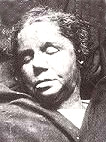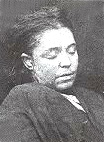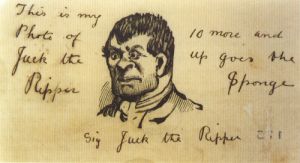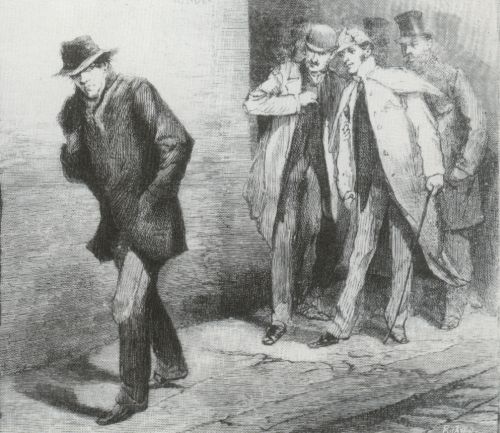|
how
many of the Whitechapel murders can be attributed to Jack the Ripper?
|
It is important to determine
exactly how many murders were committed by the same killer, because
correlating such information with the movements and availability of
suspects can be very significant in determining their validity as a
serial killer. I doubt that we shall ever know
with certainty how many of the Whitechapel murders were the work of the same
man, but this work is a reasonably objective attempt to do so. A
detailed examination and tabulation of each of the murders is published
in by ear and eyes and the
following is a summary of the findings.
There were several murders in the Whitechapel district of
London that were considered at the time to have been the work of Jack
the Ripper and retrospective investigations since then have drawn
several more into the frame. Many were discounted at the time and some
subsequently, but without a benchmark against which to judge each
killing, it is more a matter of subjective rather than objective
decision making. With so many murders under consideration at one time or
another there would inevitably be an overlap of circumstances between
some deaths purely on the basis of chance. It remains almost certain
that at least one serial killer was in operation in Whitechapel at the
turn of the nineteenth century.
The newspapers of the day revealed far too
much information about the details of the murders, giving rise to an
increasing risk of copycat killings and a decreasing certainly of
correctly ascribing the murders to a series. At the time the police did
the best they could, considering the limited range of forensic
techniques available, but the enduring question remains; exactly how
many murders can be attributed to the same serial killer? Did the serial
killer start by killing or did he work up to his first murder with a few
failed attempts?
I
have exercised some discretion regarding certain aspects of the medical
evidence. There have been
some contradictions among the expert medical testimony, even to the
point of rivalry between Drs Phillips and Bond. Such is quite unhelpful
and their differences seemed to escalate as more potential Ripper
victims were investigated.
The function of each of these doctors was to provide a
factual account of what they saw and to give an informed opinion as to
what they thought had happened. Any opinion, informed or otherwise, is
unavoidably subjective and, since the doctors were not subjected to an intense or vigorous
cross-examination, much has come to depend upon a few words of
interpretation and just occasionally the medical professionals were
inclined to be a little too specific on the basis of not much fact. In
some instances speculation has become fact and an educated guess
elevated a detail
upon which further interpretation may pivot.
Throughout the
testimonies there are contradictions, confusion, and unjustified
interpretation regarding the origins of discolouration, bruises, and
abrasions; the position of the victim when the wounds are inflicted; the
time of death, and even the handedness if the killer. But this was even
more an inexact science then than it is now, and latitude has to be
allowed. Throughout this exercise I have tried to exclude those
interpretations that involve the most conjecture.
|
|
A comparison of characteristics for each of the remaining Whitechapel
murder victims
|
Details of the remaining Whitechapel murders, those of Smith, Tabram, Mylett, McKenzie, and Coles, have been matched
with the components of the serial killerís suggested modus operandi. In addition, I have
examined the details of the murder of
Emily Dimmock - The Camden Town Murder victim - to see whether or not
the circumstances of her death fit with those of the other victims.
Dimmock has been included here because of assertions that she was
another victim of Jack the Ripper.
The remaining
Whitechapel murder, that of the unknown female torso (10.09.1889), must
be excluded without further consideration because so little information
is available on the victim and the circumstances of her death. There
were reported abdominal mutilations but this alone is insufficient to
justify the inclusion of this victim in the series. Several other
murders and incidents have been reported as occurring in the area over a
three year span from the autumn of 1888 and these have also been
excluded from this evaluation due to insufficient information. One
imagines that had the police considered any of these to have Ripper
associations then they would have received a rather higher profile than
was actually the case.
|
back
to top
|
Who's in and who's out?
|
It
was immediately
apparent from an overview of the tabulated findings that the murders of Emma Smith,
Martha Tabram, and Rose Mylett share very few components with those of
the serial killer; the most significant being the mode of death. Important components
are absent and there are several contra indications. On balance I
believe that the Ripper committed none of these three murders. The
murder of Emily Dimmock is similarly dismissed on the grounds that there
is insufficient overlap with the techniques employed in the serial
killings. Significantly in this instance the killer had plenty of time
yet there were no mutilations to Dimmockís body. If the killer had
time to wash his hands after the murder then he had time to mutilate; an
opportunity that the Ripper would not have missed.
For more details of The Camden Town Murder readers should visit John
Barber's excellent site linked at the foot of this page.
 |
 |
The murders of Alice
McKenzie (far left) and Frances Coles do, however, share many components with the
Ripper murders. If one also considers that the killer may have been
disturbed on both occasions, and before he could perform extensive
mutilation, then the circumstances of both murders are little different
from that of Elizabeth Stride. In other words, if the murders of
McKenzie and Coles are excluded from the series then so too must the murder of Stride.
There are inevitably components that do not fit although the
significance of these is uncertain. Although both women were murdered by
the time Macnaghten wrote his memorandum, neither was included
in his 'canonical' list of victims. |
There is no doubt
that had the killer opened the abdomen of McKenzie and Coles then
they would have been regarded as victims of the Ripper.
That they did not suffer such mutilation could be because the killer was
disturbed before he could proceed to that stage or because he was not
the Ripper and had no intention to mutilate. It is of course very
difficult to positively identify these two women as Ripper victims
because of what did not happen, but certainly, neither can be
excluded as victims of the same serial killer. There is also the matter
of timing; the murder of McKenzie occurred 10 months after Eddowes was
found dead and Coles was killed nineteen months after McKenzie. Serial
killers can be unpredictable in the frequency of their crimes and
variations can fluctuate with impulse or can be governed by external
factors such as being incarcerated in mental hospital or prison, being
abroad, or being otherwise unavailable.
Based purely on an objective evaluation of the data provided from expert
witness testimony relating to the crime scene and post mortem findings
it appears that six of the eleven Whitechapel murders had sufficient
characteristics in common to indicate that they may have been performed
by the same man.
The likely victims
are:
|
Name
|
Date
murdered
|
|
Mary Ann
Nichols
|
31.08.1988
|
|
Annie Chapman
|
08.09.1988
|
|
Elizabeth
Stride
|
30.09.1988
|
|
Catharine
Eddowes
|
30.09.1988
|
|
Alice McKenzie
|
17.07.1889
|
|
Frances Coles
|
13.02.1891
|
Significantly it
would appear that the murder of Mary Jane Kelly, the most publicised of
all the Whitechapel murders, was probably the work of an imitator.
Emily Dimmock was never seriously considered as being a Ripper victim
and this examination of the data supports the general impression that
she was killed by someone else.
|
Post mortem images reproduced by
kind permission of the Metropolitan Police
The Camden Town Murder
 |
 |
 |
 |
 |
 |
 |
 |
|
home |
Whitechapel |
Whitechapel victims |
interpretation of findings |
how many victims? |
Mary Jane Kelly |
resources |
by ear and eyes |
© karyo magellan 2001-2006
|





